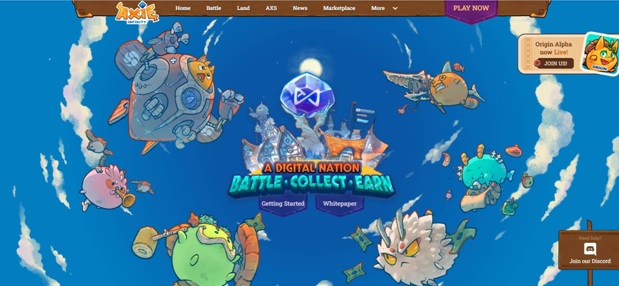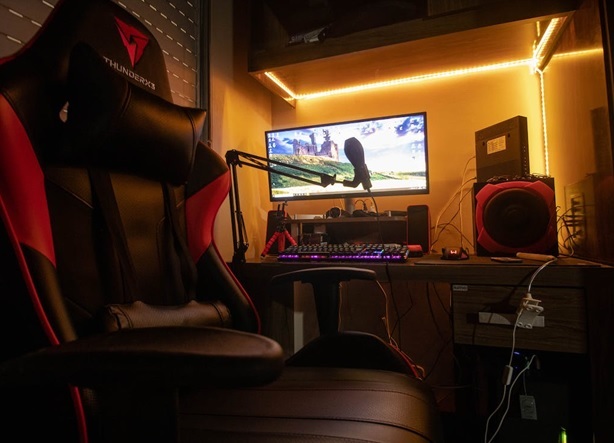Even if you are only just starting out in web3 and blockchain gaming, you have likely heard about how gaming and NFTs are going to transform the industry.
The entire NFT gaming market size is projected to hit a 20 billion dollar valuation by 2028, and those are likely conservative estimates. If traditional gaming is any indication, this is one of the hottest forms of home entertainment right now.
For anyone interested in seriously starting an NFT gaming project of their own, where do you even begin? Let’s start by getting a handle on just what this market looks like and how you can best prepare for this oncoming wave of opportunity.
What Are NFTs and How Do They Play a Role in Gaming?
NFTs, or non-fungible tokens, are special kinds of crypto tokens that are often associated with a media element, such as a social media profile picture (PFP) or piece of music.
Like other cryptocurrencies, NFTs are minted on various blockchains and are coded with smart contracts. In essence, this means that NFTs can be programmed with certain parameters, such as traits that relate to the image associated with them, or certain kinds of decentralized finance mechanisms. To date, some NFTs are used as containers to wrap various cryptocurrencies, and NFTs are also able to be staked for yield, which would involve additional smart contracts.
That NFTs will be used as an important financial instrument over the coming years is without question, but for many, the real value of NFTs rests within the gaming industry, where we are already seeing examples of how they will be used.
For instance, in the smash hit Axie Infinity (which has seen a deflation in value over the course of the last few months due to the bear market) uses NFTs extensively. The actual creatures you breed and battle with are NFTs, which means they can be traded on the blockchain and have a real world value associated with them. At the peak of the last bull market, many Axies were being traded for thousands of dollars, or several ETH at once.

The benefit of using NFTs in gaming is extensive. For instance, gaming economies have been a thing for decades, dating back to the original World of Warcraft, Everquest, and beyond. When a digital or virtual item is valued in any way by a gaming community, gamers have always found ways to buy and sell these items, whether through the game’s natural economy or otherwise. Many accounts with rare items would be sold on places like eBay for thousands of dollars, because the demand is that high.
Naturally, this is a crude process that also almost always goes against the game’s terms of service (TOS), so people that engage in some of these activities run the risk of account bans.
Incorporating NFTs into gaming solves these issues by tying real world value into the item or character themselves. Imagine playing a popular game and acquiring an ultra-rare set of armor that only .1% of the game’s users has in their inventory. You would theoretically be able to sell that item to another player and gain real value in the form of crypto tokens in exchange for it. You could even trade it or sell it outside of the game itself, on open NFT markets like Opensea.
Beyond this, that piece of armor’s traits would be hard coded through a smart contract and will exist on the blockchain in perpetuity. That item could then theoretically be incorporated into other games or crypto platforms down the line. For example, some unrelated NFT projects can currently be staked in certain gamified protocols in order to gain various crypto tokens. Though these projects are unrelated, they are drawn under the same umbrella because a custom smart contract can be coded to accept all of them.
This is the power of crypto gaming and why the NFT gaming market size is set to explode over the next few years. Different game developers will be able to create breathable, organic economies that immediately translate into the real world.

The Pushback Against NFT Gaming
Many in the traditional gaming sector have had mixed feelings about crypto gaming and NFTs. Because there is a lack of education in the space, many NFT projects are looked at as cash grabs or even scams. Gamers of a certain mind also reject the notion that real value should be tied into gaming items, however this viewpoint isn’t really supported by any evidence.
Most modern games are already deeply entrenched in some form or fashion with their own in-game currencies and tokens – they are simply not yet on the blockchain. People risk having their Fortnite accounts and IPs perma-banned just to get their hands on rare skins. Every day popular Battle Royale games rake in thousands as players scoop up new gun skins and other items. Even games that aren’t monetized in this fashion often have monthly subscriptions or battle passes of some kind.

Gamers are already heavily relying on and using a system that is tied into a real world value system, it’s just not on the blockchain. Once it is, this system will actually better serve the gamers. For instance, right now if you own one of those rare Fortnite skins, it’s value is locked, you can do nothing with it. You can’t even give it away to a friend. At most, you could give your account away or sell your account, but that is against Fortnite’s TOS.
Once NFT gaming takes off however, that rare skin will easily be tradable on the open market and you could even make real world profit off of it, all without the (somewhat predatory) practices of these gaming giants getting in the way. How cool is that?
The Possibilities Are Endless For NFT Gaming
This is just a taste of what the possibilities are when it comes to gaming and NFTs, but it does display why the NFT gaming market size is set to expand tremendously over the next decade. It’s difficult to say just how big it will all get, but if you are a game developer, NFT artist, or project coordinator interested in this market, you need to make sure you are starting on the right track.
This means analyzing your proper target audience, developing a NFT brand or game that truly speaks to your market, and nailing those blockchain fundamentals, such as tokenomics and security.
This means you need a sound web3 go to market strategy, and we can help. If you are interested in learning more about the size of the NFT gaming market and where your project might fit in, please reach out to us. Our crypto experts will be able to help you with insightful cryptocurrency market insights and NFT knowledge that will ensure your project has what it needs to succeed.
